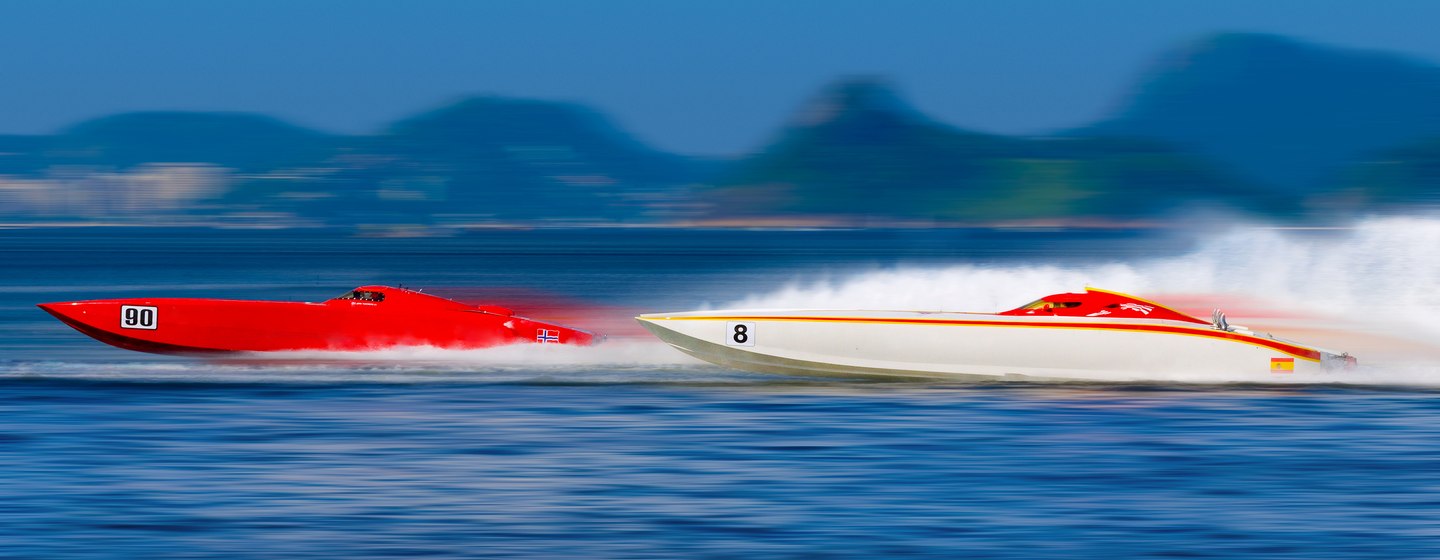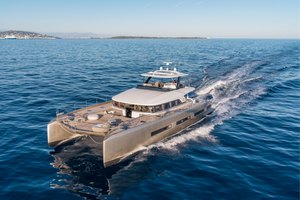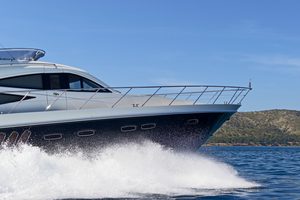Beyond sheer horsepower, the allure of these vessels extends to their vibrant exterior designs, reflecting a kaleidoscope of innovation, precision, and the relentless pursuit of speed.
The Rise of the Rum Runner
Ever since humankind developed the engine, there has (for some individuals) been an ever-increasing desire to go fast. During the Prohibition of Alcohol in the USA between 1920-1933, this inherent need became a requirement not only on land but also on the water. Enter, the rum runner.
The term rum runner descends from smugglers that outfitted their slow sea skiffs (models such as the Sea Bright Dory) with powerful engines outputting approximately 450bhp. These modest fishing vessels were selected due to their flat bottom hulls, enabling them to run up onto the beach. Their favorable characteristics, however, did not stop there. The boat's design, with its extremely high bow and stern, also ensured that it rode high waves with ease making it an excellent performer in adverse weather conditions.
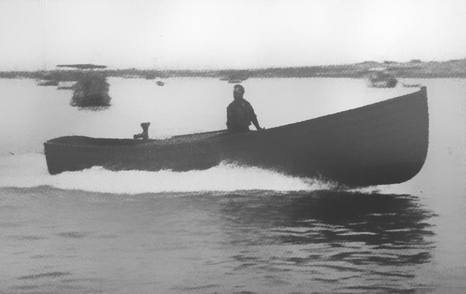
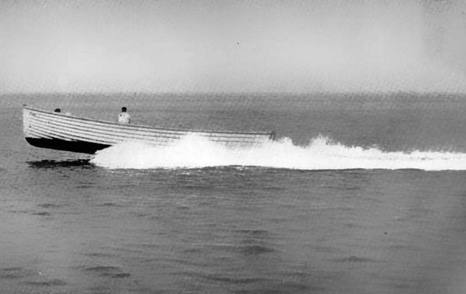
The high-horsepower variant — an adaptation of what was once a sailing boat — would then travel to larger vessels anchored offshore to collect rum that had been brought from the Caribbean Islands. Once loaded with contraband, the rum runners would then travel back to shore, often outrunning the US Coastguard which at the time had much slower boats.
Boating enthusiasts and sportsmen got wind of what the rum runners were up to and subsequently overshadowed the criminals by deciding to equip their own vessels with increasingly high-powered forms of propulsion, resulting in the evolution of the fast sea skiff.
Captain Bill McCoy, an infamous rum runner, pioneered the smuggling of alcohol from Bimini and the Bahamas to the USA. Operating the Tomoka, a ship designed for both smuggling and defense, he navigated to the Prohibition's three-mile limit offshore. McCoy, who didn’t mix his alcohol with anything, was renowned for reliability, earning him the nickname "The Real McCoy" as he offloaded contraband onto powerful motorboats for delivery ashore.
Converted Work & Pleasure Boats
It was around this time that boatbuilders began to get an increasing number of 'strange' requests from enthusiasts. Drawing inspiration from the vessels that the rum runners used (while choosing to ignore the reasons why they were used) boaters started to ask for engines with more power to be fitted in addition to glass windshields and half cabins being installed to shelter them from the wind and cold weather.
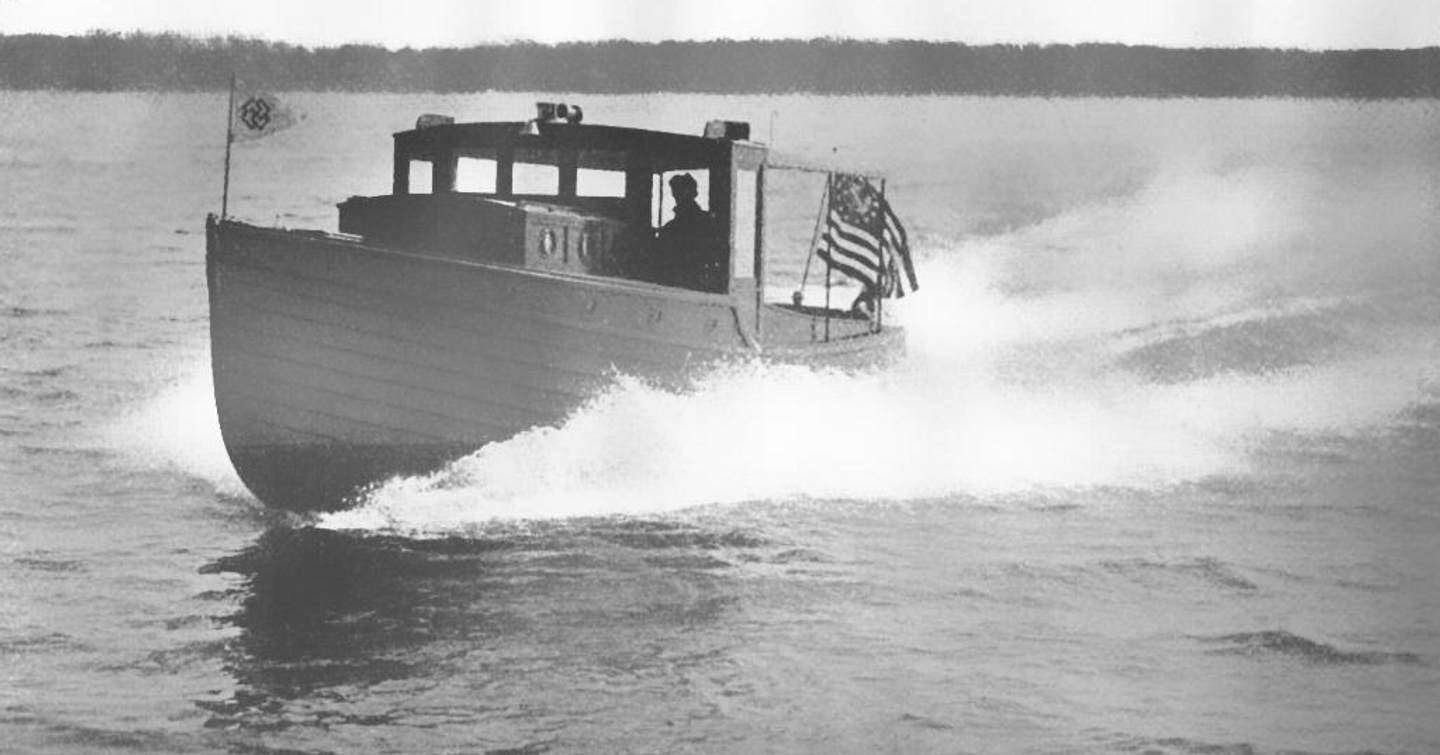
To ensure the skiff continued to operate optimally at sea, balance onboard was vital. The new engines were always placed between the bulkheads in the center of the vessel, with a fuel tank situated on either side. Previous attempts had been made to place the fuel tanks at the bow, but this was found to be impractical.
When skiffs were converted to cruisers, the same engine and fuel tank layout were used, with a bridge now built directly over the engine. A flush deck or a hunting cabin was then added forward in addition to a cabin aft, completing the adaptation. It was these early motorboat conversions that would set the foundations for what was to come later.
Development of the V-Shaped Hull
Fast forward to a spring day in 1960 when a 9m (31ft) inboard vessel broke cover in a shipping channel between Miami Beach and Fisher Island in Florida, USA. The wooden flybridge boat in question, the Bertram 31 named MOPPIE, had a hull designed by Charles Raymond Hunt, an unassuming inventor from New England. The somewhat odd-looking hull was vee-shaped for its entire length with fore-and-aft strakes below a sharp chine — an entirely new design.
Captain Sam Griffith, a veteran racer, was said to have opened up the throttles on what was considered a rough day, and owner Dick Bertram (who was also onboard at the time) wrote, "The boat held its course as though it were on tracks. We opened the throttles and raced those following seas at 40 knots straight for the inlet."

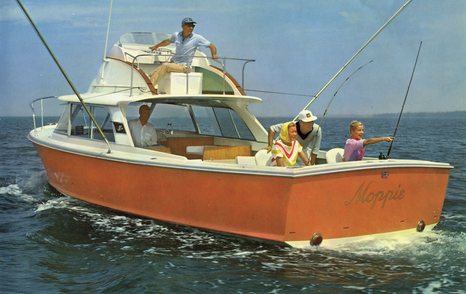
MOPPIE was subsequently entered into the 1960 Miami-Nassau powerboat race in April, a race that many wanted to forget, but a race that cemented Hunt's hull design into boating history. With seas stated to have been running at 8-12ft, with wind gusts of 30 knots, the Bertram 31 ran to a triumphant victory, completing the course in eight hours, two hours ahead of second place.
It was Hunt's 24-degree deep-vee hull with lifting strakes that made such a win possible, delivering speed, stability, and handling. The design changed the face of motorboating and powerboating forever and set the hull standard for the powerful yachts and boats of today.
BERTRAM 31
- L.O.A: 9m (30.7ft)
- Beam: 3m (11.2ft)
- Draft: 1m (3.1ft)
The Dawn of the Speedboat
The 1980s was the decade of electronic music, mullets, loud clothing, and even louder speedboats. One such "muscle boat" garnered much attention, the Wellcraft Scarab 38 KV, following its on-screen debut in the popular Miami Vice television show.
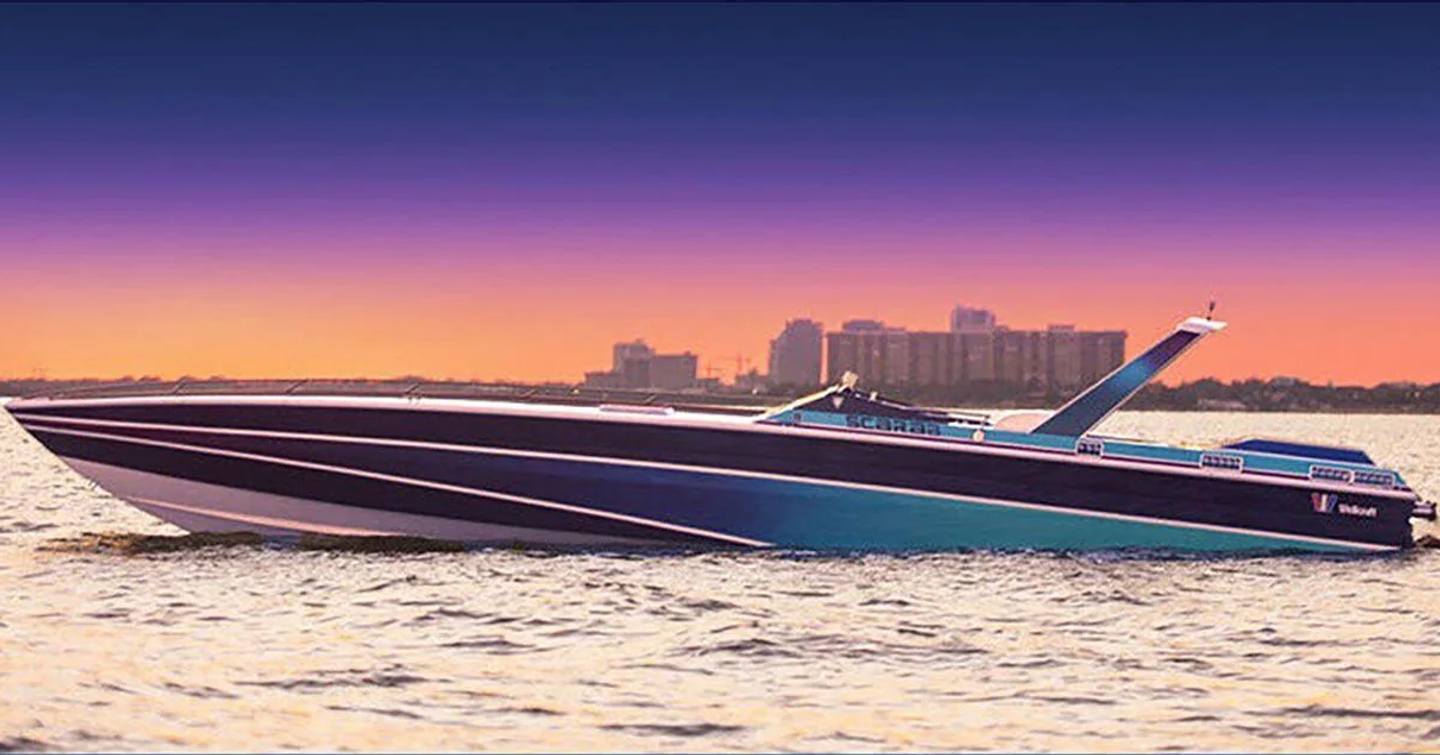
Equipped with twin V8 MerCruiser inboard petrol engines outputting 440bhp, four generously sized exhaust outlets, and a 28-hue color scheme, the Scarab 38 KV could achieve a top speed of approximately 52 knots — while delivering eye-wateringly low fuel efficiency figures.
Despite costing USD $130,000 when new, Wellcraft's sales were said to have increased by 20% across the board following the speedboat's appearance on the famous show.
Modern Racing Hulls
Powerboat hulls that followed were and still are a fascinating intersection of engineering, hydrodynamics, and aesthetics, where form and function merge to achieve optimal performance on the water. At the heart of every powerboat lies its hull — a crucial component that directly influences how the vessel moves through the water.
A key consideration in powerboat hull design is the hull's shape, which can broadly be categorized into planing, displacement, or a hybrid of both. Planing hulls are designed to lift the boat onto the water's surface at high speeds, reducing drag and allowing for increased velocity. Displacement hulls, on the other hand, move through the water rather than riding on top of it, providing a more stable and fuel-efficient ride at lower speeds.

The specific application of the powerboat influences hull design. High-performance powerboats designed for speed and agility often feature deep-vee hulls, known for their ability to slice through waves and provide a smooth ride. Catamaran hulls, with two parallel hulls, are another design often found in powerboats, offering stability and speed. Meanwhile, offshore racing boats may incorporate stepped hulls, introducing a series of horizontal surfaces to enhance lift and reduce drag.
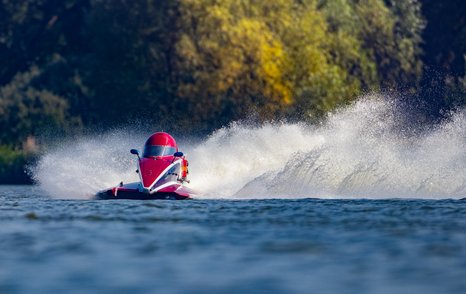

Materials also play a crucial role in powerboat hull design. Fiberglass is a common choice due to its strength, durability, and versatility. Advanced composite materials, such as carbon fiber, are becoming increasingly popular for their lightweight yet robust properties, contributing to improved performance and fuel efficiency.
In recent years, there has been a surge in innovative hull designs that integrate hydrofoil technology. These foils lift the hull out of the water, reducing drag and enhancing speed and fuel efficiency. The dynamic nature of powerboat hull design ensures a continuous evolution, with designers and engineers pushing boundaries to achieve the perfect balance of speed, stability, and efficiency.
